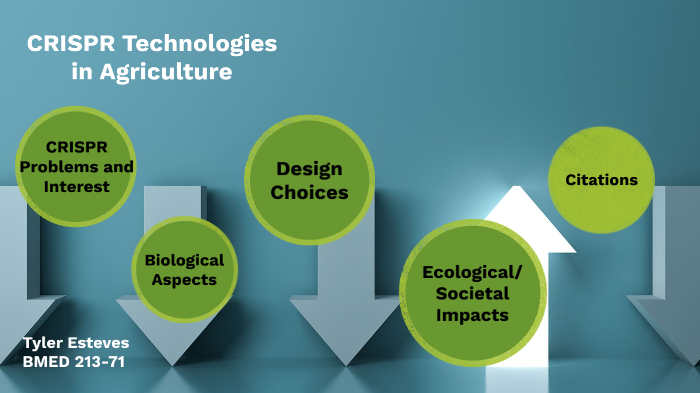CRISPR in Agriculture : CRISPR (Clustered Regularly Interspaced Short Palindromic Repeats) is a revolutionary gene-editing technology that has the potential to transform the field of agriculture. CRISPR allows scientists to precisely edit genes, which could help to create crops that are more resistant to pests and diseases, more tolerant of environmental stresses, and more nutritious. In this article, we will explore the role of CRISPR in agriculture and discuss some of the potential benefits and challenges associated with this technology.
What is CRISPR?
CRISPR is a gene-editing technology that allows scientists to make precise changes to DNA. The technology is based on a natural defense mechanism that bacteria use to protect themselves against viruses. Bacteria use CRISPR to store small pieces of viral DNA, which they can use to recognize and destroy viral DNA if they are infected again in the future. Scientists have adapted this system to create a powerful gene-editing tool that can be used to edit genes in a wide range of organisms, including plants and animals.
How Does CRISPR Work?
CRISPR works by using a small RNA molecule to guide a protein called Cas9 to a specific location in the genome. Once Cas9 is at the target location, it can cut the DNA, which allows scientists to add, remove, or replace specific genes. This technology is highly precise and efficient, which makes it an ideal tool for creating crops with specific traits.
Benefits of CRISPR in Agriculture
CRISPR has the potential to revolutionize agriculture by creating crops that are more resistant to pests and diseases, more tolerant of environmental stresses, and more nutritious. Here are some of the potential benefits of CRISPR in agriculture:
1. Pest and Disease Resistance: One of the biggest challenges facing farmers is pests and diseases that can damage or destroy crops. CRISPR can be used to create crops that are more resistant to pests and diseases, which could reduce the need for pesticides and other chemicals.
2. Environmental Stress Tolerance: Climate change is causing more frequent and severe environmental stresses, such as droughts and floods, which can damage crops. CRISPR can be used to create crops that are more tolerant of these stresses, which could help to ensure food security in the face of climate change.
3. Nutritional Enhancement: Many crops lack important nutrients, which can lead to malnutrition and other health problems. CRISPR can be used to create crops that are more nutritious, which could help to improve the health of people who rely on these crops for their daily nutrition.
4. Reduced Waste: CRISPR can be used to create crops that have longer shelf lives, which could reduce food waste and help to address food insecurity.
Challenges of CRISPR in Agriculture
While CRISPR has the potential to transform agriculture, there are also some challenges associated with this technology. Here are some of the potential challenges of CRISPR in agriculture:
1. Regulatory Hurdles: There are currently few regulations governing the use of CRISPR in agriculture, which could make it difficult for farmers to use this technology.
2. Public Perception: Some people are skeptical of gene-editing technologies, which could make it difficult to gain public acceptance of CRISPR in agriculture.
3. Intellectual Property: There is currently a debate over who owns the intellectual property rights to CRISPR, which could make it difficult for small farmers to access this technology.
4. Unintended Consequences: There is a risk that CRISPR could have unintended consequences, such as creating new pests or diseases, which could harm crops and ecosystems.
Conclusion
CRISPR has the potential to revolutionize agriculture by creating crops that are more resistant to pests and diseases, more tolerant of environmental stresses, and more nutritious. However, there are also some challenges associated with this technology, including regulatory hurdles, public perception, intellectual property, and unintended consequences. As scientists continue to explore the potential of CRISPR in agriculture, it will be important to address these challenges and ensure that this technology is used in a responsible and sustainable way.
